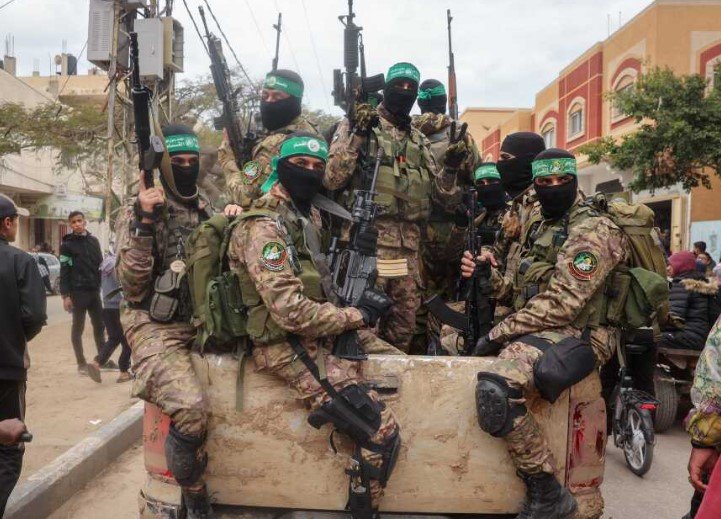Israel has pinpointed the locations of nine out of the 13 remaining bodies of deceased hostages still held in Gaza, according to recent reports. This comes as the handover process stalls under a US-brokered ceasefire deal from October 2025, with Hamas claiming difficulties in locating some remains while hinting at resistance to disarming.
Ceasefire Deal Faces New Hurdles
The ceasefire, which took effect on October 10, 2025, aimed to end over two years of conflict between Israel and Hamas. Under its terms, Hamas agreed to return all living hostages and the bodies of those who died, in exchange for Israel releasing Palestinian prisoners and pulling back from parts of Gaza.
Recent updates show that Hamas has returned 15 bodies so far, leaving 13 unaccounted for. Israeli officials say they know where nine of these are, based on intelligence gathered during operations. This knowledge puts pressure on Hamas to act, but the group says searches are ongoing with help from Egyptian teams.
Delays have sparked frustration in Israel, where families of the hostages demand swift action. US officials, including Vice President JD Vance, visited the region last week to strengthen the deal. During these talks, Israel’s military leaders stressed the long-term pain of unresolved cases, like that of soldier Hadar Goldin, whose body has been held since 2014.

Hamas negotiators have suggested they might not fully disarm, despite the agreement’s requirements. This stance raises doubts about the deal’s future and could lead to renewed tensions.
Hostage Returns So Far and What’s Left
Out of the original 28 deceased hostages, 15 have been handed over through the Red Cross since the ceasefire began. These returns happened in stages, with the latest batch including bodies identified as Arie Zalmanowicz and Tamir Adar.
The remaining 13 bodies include those of civilians and soldiers captured during the October 7, 2023, attacks. Israel believes most are in areas like Khan Younis, where searches continue with machinery and international aid.
Here is a breakdown of the hostage situation based on current reports:
| Category | Total Originally Held | Returned | Still in Gaza |
|---|---|---|---|
| Living Hostages | Around 100 (pre-ceasefire estimate) | All reported returned | 0 |
| Deceased Hostages | 28 | 15 | 13 |
| Key Locations Mentioned | N/A | N/A | Khan Younis, Hamad City |
This table highlights the progress and gaps, showing that while living hostages are back, the focus now is on the deceased.
Families have mixed emotions, with relief for those returned but ongoing grief for the rest. Public sentiment in Israel pushes for full compliance, tying into broader calls for accountability.
Hamas Search Efforts and International Involvement
Hamas has expanded its searches in Gaza, deploying teams to areas like Hamad City in Khan Younis. Egyptian workers joined these efforts last week, using heavy equipment to dig through rubble from past battles.
Reports indicate Hamas found at least one more body recently and plans to hand it over if conditions allow. However, Israeli officials question these claims, suggesting Hamas might be stalling to avoid giving up weapons as required.
International forces are set to help secure Gaza under the deal, but Israel insists on deciding which troops enter. This control aims to prevent security risks while ensuring the ceasefire holds.
The US has played a key role, with President Donald Trump warning of consequences if Hamas delays. These diplomatic moves build on earlier successes, like the return of two bodies on October 15, 2025, showing that pressure can work.
Impact on Families and Broader Peace
For families, each day without closure adds to the trauma that started on October 7, 2023. Stories of hostages like Tal Haimi, whose body was returned last week, bring some peace but highlight the pain of those still waiting.
This situation ties into larger peace efforts in the Middle East. The ceasefire has reduced violence, allowing aid into Gaza and rebuilding to start. Yet, unresolved hostage issues could unravel these gains.
Experts note that similar delays happened in past deals, like the 2011 prisoner swap. Logical reasoning suggests Hamas might use the bodies as leverage, but international scrutiny makes this risky.
Recent events, such as Israel’s operations in Lebanon earlier in 2025, show how quickly conflicts can escalate. A full return of bodies could build trust and lead to lasting stability.
Challenges Ahead for the Agreement
The deal requires Hamas to disarm and cede control of parts of Gaza, but a top negotiator recently said the group won’t give up its weapons. This defiance challenges the US-brokered terms and tests Israel’s response.
Israeli Prime Minister Benjamin Netanyahu has stated that foreign troops in Gaza must be approved by Israel to maintain security. Meanwhile, Hamas blames battlefield conditions for delays in body handovers.
Key challenges include:
- Locating the four unknown bodies, which Israel says it lacks info on.
- Ensuring safe transfers through the Red Cross amid ongoing tensions.
- Balancing prisoner exchanges, with Israel agreeing to release 15 Palestinians per hostage body.
- Preventing violations that could restart fighting.
These points show the fragile balance needed to move forward.
As of late October 2025, no new bodies have been returned in days, heightening urgency. Analysts predict that without progress, the US might impose stricter measures to enforce the deal.
What do you think about the ceasefire’s chances? Share your thoughts in the comments and spread this article to raise awareness about the hostages’ plight.
